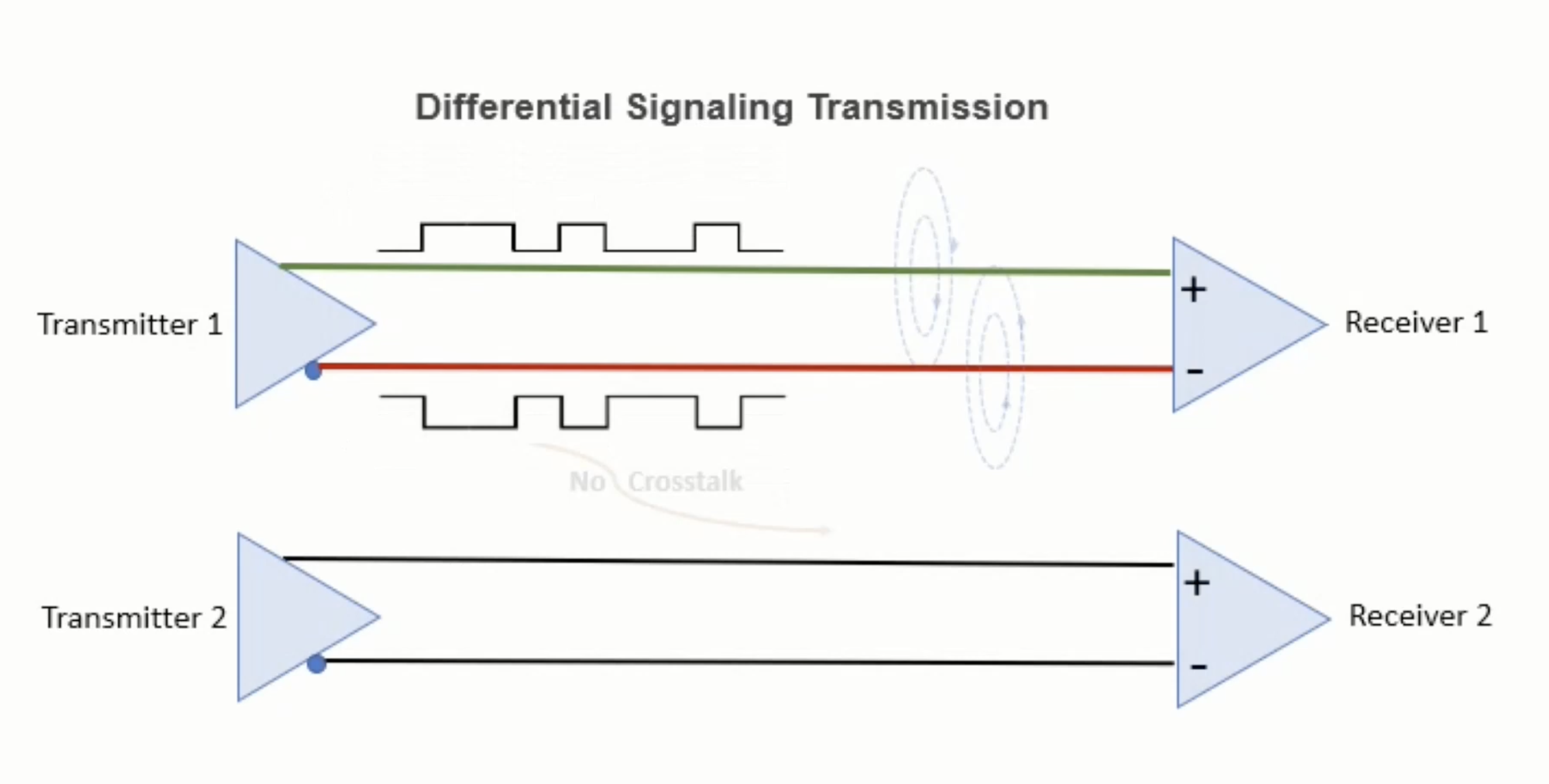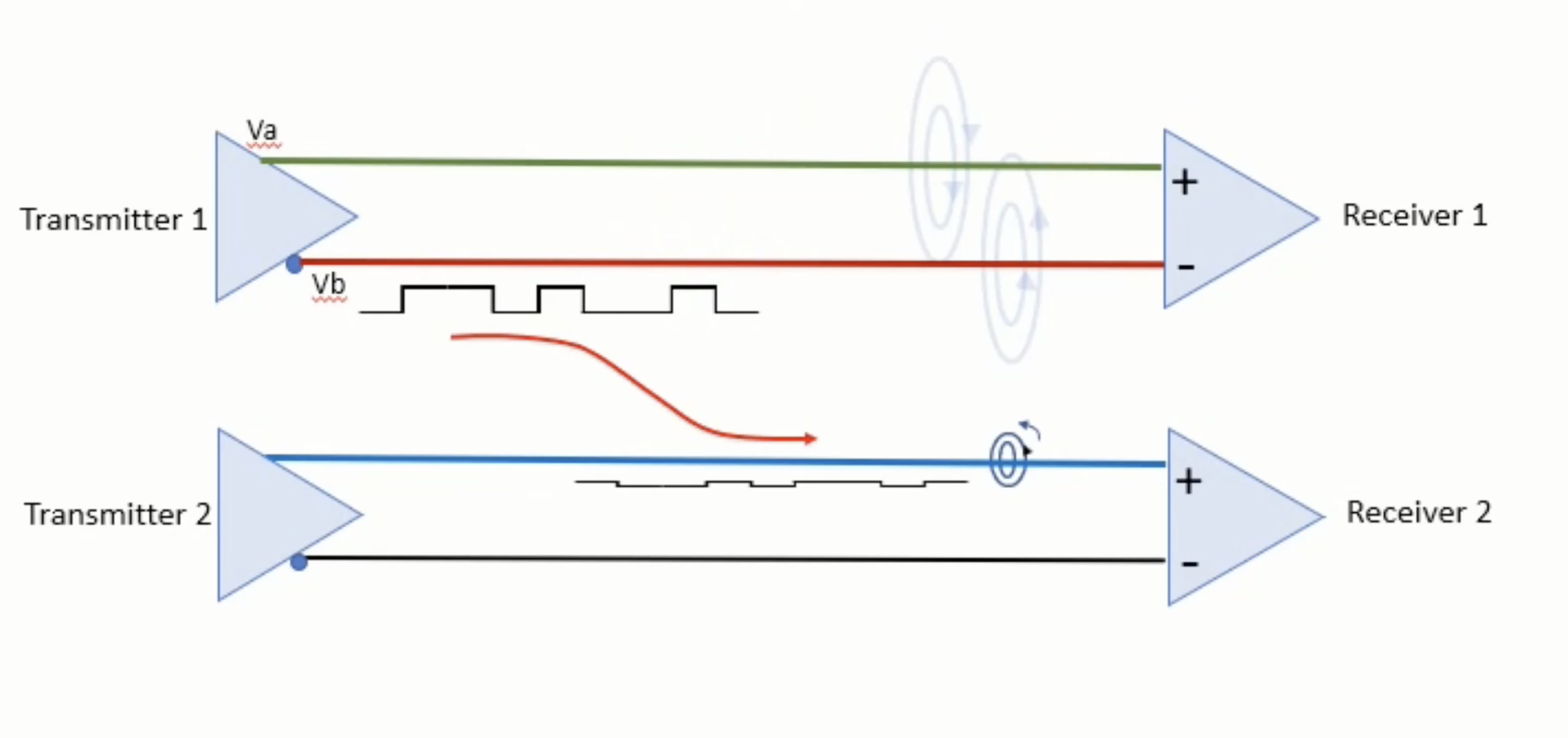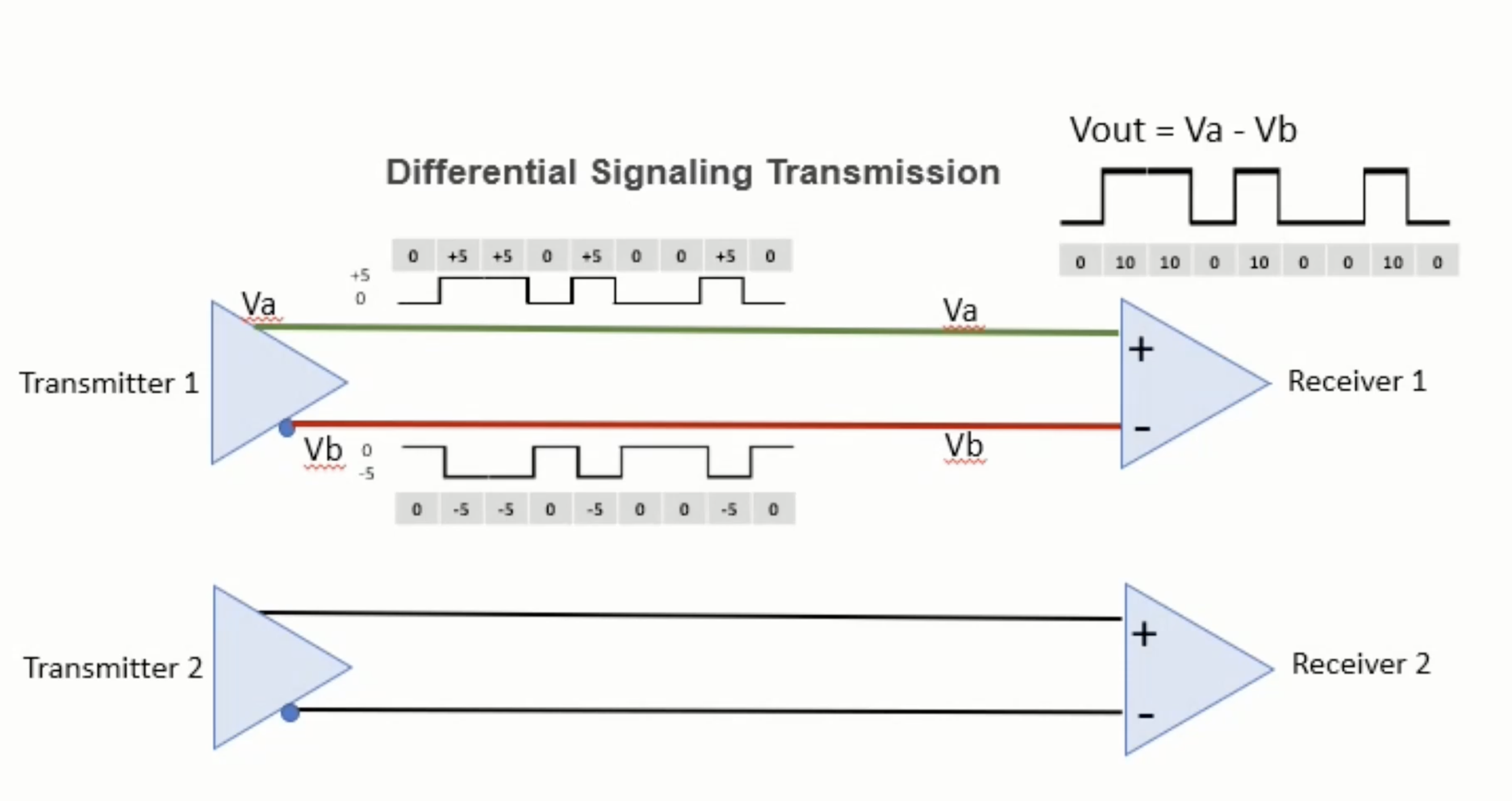Differential Signaling
Twisted Pair wires together reduces electrical interference through a method called differential signaling.
How it works
Two signals that are inversely related are sent through the pair of twisted wires.
As these wires are close, they experience the same electromagnetic interference (EMI). Any noise should affect both wires similarly, appearing as a common signal.
When the signals at the end are compared or subtracted, the noise cancels out because it’s common to both wires, but the desired signal, being inverse on the two wires, doesn’t cancel. The result is the original signal without the interference.
Additionally, the twist ensures each wire spends an equal amount of time nearer to potential interference sources, making the interference level equal on both wires and more effectively cancelled out.
This is used for example in CAN.
Really helpful video

- Crosstalk still exists a little bit


So there’s 2 ideas here:
- Minimize the EM generated by the wire
- Minimize the effects of the external EMI
Using differential signaling cancels out the two magnetic fields, since they are in opposite direction. Have them twisted ensures that it effects the cable at the same time.